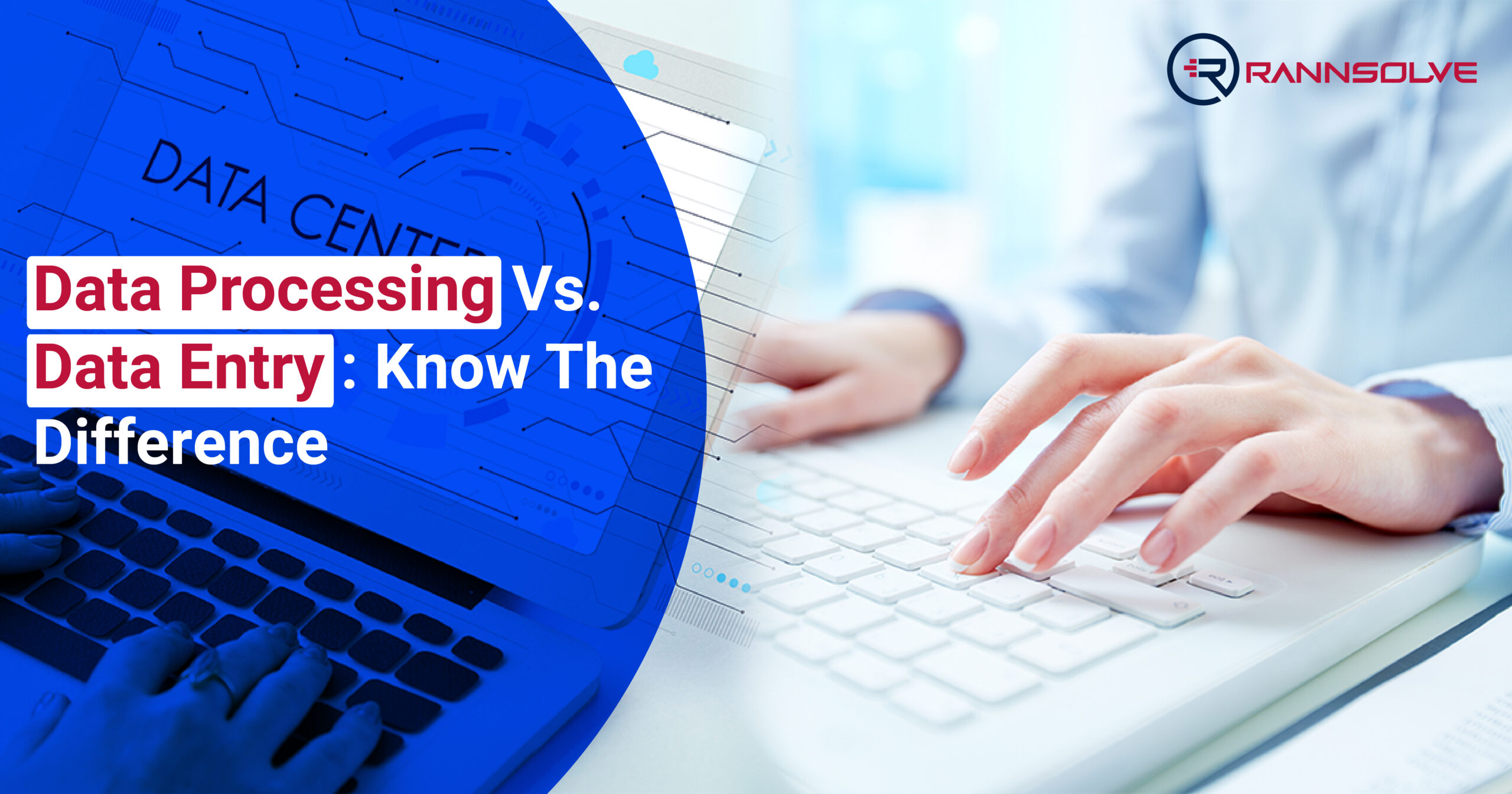Data plays a central role in every business. But before it can be useful, it needs to be processed and organized. That’s where data entry processes and data processing services come in. These two tasks often get understood synonymously, but they serve very different purposes.
Data entry is straightforward, as the name suggests. The data entry process takes information from physical documents or other sources and enters it into a digital format. This could be anything from typing out handwritten notes to transferring numbers from forms into spreadsheets with a focus on accuracy.
Data processing, on the other hand, goes several steps further. Data processing involves taking that raw data and turning it into actionable insights. Data processing services clean up data, organize it, analyze it, and even use it to uncover trends or answer specific questions.
The data entry process requires speed, accuracy, consistency, and a focus on not making any errors. Online data processing services, meanwhile, call for analytical thinking. You need to be able to spot patterns, interpret numbers, and sometimes apply basic statistical techniques using the data.
In simple words, the data entry process gives you the raw facts, while intelligent document processing helps you actually use them.
Types of Data Entry Services
The data entry process comes in different forms, depending on what kind of information needs to be digitized and how it’s handled. While the core job remains the same, which is entering data into a system. Businesses often need to add data to CRMs, marketing platforms, or internal databases. Whether it’s leads, product information, or survey results, data entry plays a role. However, the method and format can differ. Here are the major types of data entry services.
- Automated Data Entry
Automated data entry processes use AI tools to read and extract data from documents, websites, or systems. It’s useful when dealing with large volumes of information. While it requires some setup and human-in-the-loop quality checks, it saves time in the long run. Automated data entry is common in sectors that deal with large amounts of data.
2. Online Data Entry
The online data entry process is carried out through web-based platforms or cloud software, which can be accessed and stored immediately. Instead of dealing with paperwork, everything is already digital, which makes it easier to manage data and safer to store it.
3. Offline Data Entry
Not every company operates entirely online. The offline data entry process involves working with physical documents like paper forms, receipts, or handwritten notes. Which is then digitized for future analysis, audit, and compliance.
4. Manual Data Entry
Sometimes data can’t be automatically extracted. In those cases, the manual data entry process is the only option. It might involve specialized software, but the process still relies on a human entering or extracting the information manually. Manual data entry is slower and usually not worth spending in-house resources on. This is why many companies choose to outsource it.
- Image Data Entry
The image data entry process is used when the data source is visual, such as scanned forms, receipts, or handwritten notes. Optical Character Recognition (OCR) is commonly used to identify image-based texts, but in many cases, human review is needed to ensure accuracy. This kind of data entry is often used in insurance, healthcare, and financial services.
Types of Data Processing Services
While the data entry process is mostly about conversion, intelligent document processing is about transformation. It’s what happens after you’ve collected the data, but before you can use it. There are different ways to process data with intelligent document processing techniques, depending on the business need, the volume of data, and how fast results are needed.
- Batch Processing
Batch data processing is used when you have a large volume of data that doesn’t need to be analyzed in real-time. You collect the data over a period of time and then process it all at once. For example, a company might process monthly sales data in one go, generating charts or summary reports to review trends. Batch data processing can take time, but it’s efficient and less resource-intensive, especially when you don’t need instant results.
- Online Processing
Online processing, also called transactional or interactive processing, handles data the moment an action is taken. For example, think of someone placing an order on an online store or updating their account information. The system processes the data right away. This is the standard for customer-facing systems where quick response times are expected.
- Distributed Processing
When data volumes get too big for one system to handle, distributed intelligent data processing spreads the work across multiple machines. These could be servers in different parts of the world, all working together. This approach is fast, efficient, and scalable. It’s used for big data projects, analytics platforms, and machine learning pipelines. Many modern systems rely on data lakes and cloud infrastructure to support this kind of processing.
- Manual Processing
Some businesses still rely on manual processing, especially if they operate in areas without access to advanced tech or intelligent document processing tools. This might involve calculating figures by hand, sorting information, or using spreadsheets instead of software. It’s slow and prone to errors, but sometimes necessary, especially for small businesses or in situations where automation isn’t feasible.
- Cloud Data Processing Services
Cloud-based online data processing services let businesses store and analyze their data using remote servers. This means they don’t have to manage their own infrastructure. It also makes it easier to scale up when needed, without spending on hardware. Using online data processing services, companies benefit from flexible access, reduced IT costs, and better disaster recovery options. Data processing services are widely needed in industries where data needs grow quickly.
- Real-Time Data Processing Services
In some cases, waiting is not an option. Real-time data processing services are used when decisions need to be made instantly. In the areas of fraud detection, live tracking, or dynamic pricing, online data processing services come in as a huge benefit. By partnering with a data processing services company, you get access to high-speed intelligent document processing tools.
Why Outsource Data Entry and Data Processing to Rannsolve?
The biggest reason is time and accuracy. Data-related tasks take up hours that could be spent on core operations. Most businesses do not have the resources in-house to manage the data entry process and online data processing services. This is why outsourcing comes as a feasible option. Outsourcing data processing services gives businesses access to skilled professionals who specialize in these tasks. Intelligent document processing improves accuracy and speed, without burning through internal resources. And in most cases, the cost of outsourcing is far less than hiring and training staff to do it internally.
Whether it’s basic data entry or full-scale processing, partnering with Rannsolve means you’re in full control of your data. Talk to our data digitization expert now.
FAQ
Data entry involves digitizing raw information, while data processing services transform that information into actionable insights through cleaning, organizing, and analyzing to support business decision-making.
A well-managed data entry process ensures the information is accurate, consistent, and accessible. It lays the foundation for effective reporting, compliance, and smooth operational workflows in any business environment.
Outsourcing online data processing services saves time, reduces operational costs, and boosts efficiency by giving companies access to skilled professionals and advanced technologies
Healthcare, finance, eCommerce, and logistics industries, among others, benefit greatly from intelligent document processing. Data entry and data processing services improve data accuracy, speed up workflows, and provide actionable insights for better decision-making.





